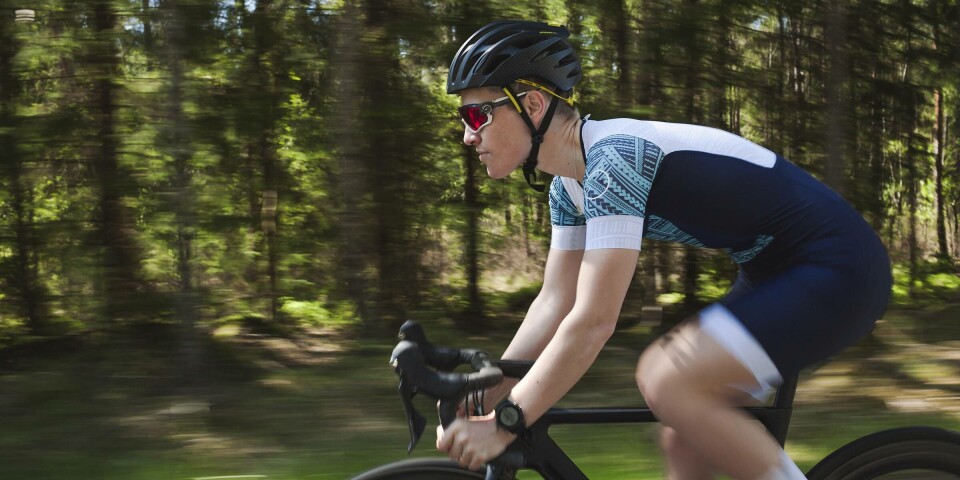THIS CONTENT IS BROUGHT TO YOU BY Oslo Metropolitan University - read more
Exercising in your 30s is like saving for retirement
“We know that it's beneficial to build physical reserve capacity whilst young, but it needs to be maintained throughout life,” says a researcher.

We’re in peak physical shape between the ages of 25 and 30. After that, the ageing process begins.
But it doesn’t take much to slow it down.
Loss of physical capacity every decade
“Before turning 50, it's crucial that we follow the guidelines for physical activity and eating as healthily as possible. After turning 50 and until we're 70 years old, we lose around 10 per cent of our physical capacity, meaning muscle strength and fitness, every decade,” says Therese Brovold.
Brovold is a physiotherapist working at OsloMet's Department of Rehabilitation Science and Health Technology. She is especially interested in why there is such a large variation in function and health among the elderly.

“Exercising in your thirties is like saving for retirement. We know that it's beneficial to build physical reserve capacity whilst young, but it needs to be maintained throughout life. Otherwise, the account balance will quickly dwindle,” she says.
Inactivity accelerates the ageing process
“Physical inactivity can accelerate the ageing process,” says Brovold.
We cannot stay young forever, but there's a lot of evidence suggesting that physical activity and exercise can prevent or delay illness.
Brovols explains that we still do not know whether the changes seen in an ageing population are due to genetics or lifestyle.
"But there's plenty to suggest that we can slow down age-related changes by remaining physically active and prevent illness for as long as possible,” she says.
Under 40 per cent follow the recommendations
“Research shows that good exercise habits are established during adolescence and early adulthood. So there's a lot to gain by starting early and maintaining a positive and active life for as long as possible,” says Brovold.
The latest recommendations from the WHO suggest 150 minutes of moderate to high-intensity physical activity each week.
“This equates to around 22 minutes per day,” she says.
Figures from 2016 show that fewer than 40 per cent of Norwegians of all age follow the WHO recommendations.
What would you recommend a 30-year-old to do?
“I would recommend to everyone that they prioritise being physically active every day. Many people claim they don’t have time to be physically active, but it doesn’t take a lot,” she says.
22 minutes of moderate activity each day is enough.
“It's important to remember that you don’t have to go to the gym to maintain good health; sticking to the national guidelines is enough. There are numerous activities that are beneficial to health and you can find an enjoyable activity that makes you happy. For example cycling through the forest or to and from work, skiing, skating, going for a walk, especially uphill,” says Brovold.
What’s important is to ensure that it is moderate to high intensity. Moderate intensity is when your breathing gets heavier and your heart beats faster.
“What we refer to as conversational pace. I would also recommend strength training for key muscle groups twice per week. Important strength exercises include squats, dead lifts, shoulder presses, and bench presses,” she says.
You definitely have time to fit in 22 minutes each day
“You don’t have to go to the gym to maintain good health, you just need to be physically active for 22 minutes each day. The time spent on physical activity does not need to be continuous and all movement counts,” she says.
However, the intensity must be moderate or high. This includes the usual advice such as taking the stairs instead of the lift or getting off the bus a couple of stops early to get some power walking in.
“Maybe you need some aids to motivate you? For example, an exercise watch, an activity buddy, an exercise journal to write the time and date of the activity in, a reward for yourself if you manage to reach your targets or something similar?” she asks.
Don’t run if you hate running
If you are going to exercise, pick an activity you enjoy. Don’t choose to run if you hate running. It can also be a good idea to find someone to exercise with,” she adds.
Brovold recommends arranging strength training sessions with colleagues once a week if you have access to a strength training facility.
“You could also join a running group, like many people do today,” she says.
———
Read the Norwegian version of this article on forskning.no

This content is paid for and presented by OsloMet
This content is created by Oslo Metropolitan University's communication staff, who use this platform to communicate science and share results from research with the public. Oslo Metropolitan University is one of more than 80 owners of ScienceNorway.no. Read more here.
More content from OsloMet:
-
"Norwegians practice a friendship version of a ‘one-night stand'"
-
"We need to talk about how we assess teacher students"
-
Cannabis use in Norway has increased: “Not everyone needs moral lectures or worried looks"
-
Many children with ADHD do not thrive at school
-
An out-of-control race: Why we fear artificial intelligence
-
One in four seniors feels digitally discriminated against




































